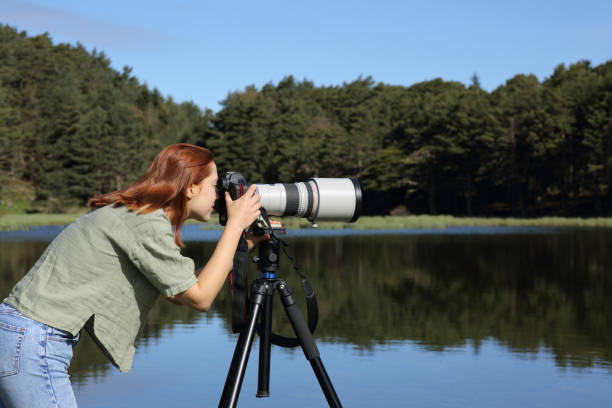
Wildlife and sports may not have a lot in common, but one thing is for sure—you usually can’t get too close to the action when you're photographing either one of them. Generally speaking, when shooting wildlife or sports, photographers use long telephoto zooms, like a 100-400mm, for example.
Long, ultra-telephoto zooms allow you to safely get up close and personal with your subjects from afar. Whether you’re shooting a tiger in the wild, or a wide-receiver catching a pass in a pro football game, your weapon of choice for shooting fast action at a distance will be more or less the same—a long telephoto zoom, preferably one with snappy autofocus.
Focusing manually is extremely difficult with ultra-long lenses, especially when there’s fast action, like a bird in flight, or a tennis player diving to make a save.
One challenge to capturing the sharpest photos, and an issue that’s amplified when using longer lenses, is camera shake. To minimize camera shake, a good rule of thumb is to make sure that your shutter speed is faster than the reciprocal of your focal length. For example, if your focal length is 400mm, your shutter speed should be 1/400 of a second or faster to help ensure the sharpest possible results.
If you really want to make sure you’re getting sharp images consistently, you’ll definitely want to use a tripod. Tripods stabilize the camera, preventing camera shake from happening in the first place. Since your typical wildlife and sports photography subjects tend to move around a lot, you’ll need to be able to move the camera readily, quickly, and easily. That’s why pan-and-tilt tripod heads are great for this style of photography, as they allow for quick and precise control over where you point your camera and lens.
Another spec to consider when buying your first ultra-telephoto lens is image stabilization, which compensates for camera shake to give you a bit more room for error in capturing sharp photos while shooting handheld. Some systems have image stabilization in-camera, while others rely on the lens to provide it. Regardless, image stabilization can make sharp handheld photos considerably easier to achieve with an ultra-telephoto lens.
In addition to ensuring that your shutter speed is fast enough, another thing to keep in mind about long lenses is that your images will generally come out sharper with your aperture stopped down a bit. For example, if your lens has a maximum aperture of f/4, try stopping down to f/5.6 or f/7.1 to start, and then increase your ISO until you've got a high enough shutter speed to avoid camera shake. Aside from making your lens look its sharpest, stopping down will increase depth of field, which will help you to get your whole subject in focus.

 Admin
Admin
Leave A Reply
Your email address will not be published. Required fields are marked *